Do Autistic People Know They're Autistic?

Exploring the Spectrum of Self-Knowledge in Autistic Individuals
The question of whether autistic people know they are autistic touches on complex facets of self-awareness, diagnosis, behavioral understanding, and societal perception. Autism presents differently across individuals and ages, making awareness and recognition uniquely personal experiences. This article delves into how autistic individuals perceive their own traits, the recognition process, and what influences their awareness of autism.
Understanding the Diversity of Autism Presentations
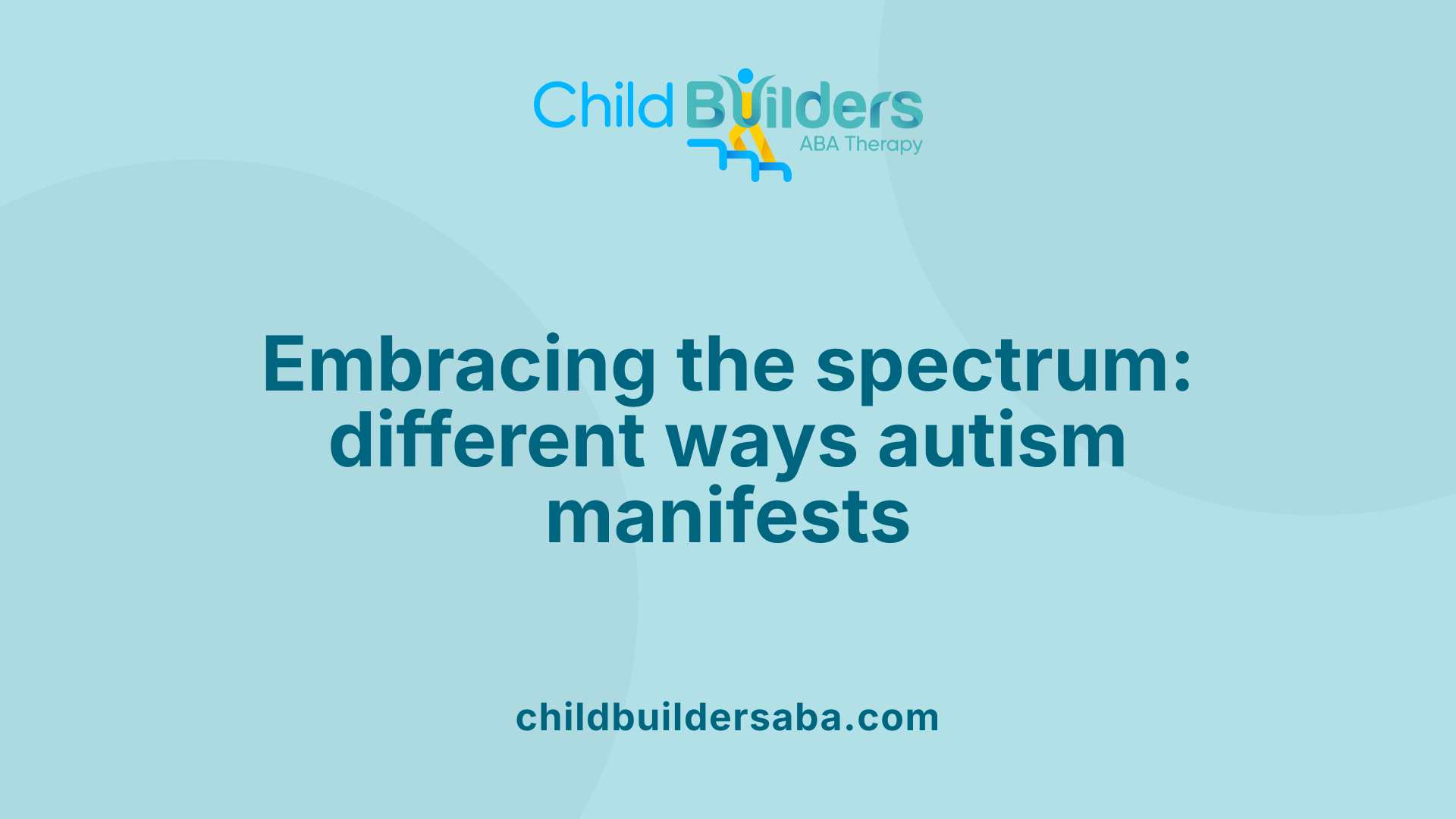
How Does Autism Manifest Differently in People?
Autism Spectrum Disorder (ASD) is characterized by a wide range of traits and behaviors, which makes it impossible to identify a single way that autism appears. Some individuals might display clear signs early in childhood, while others might be less obvious, especially if they develop coping strategies or masking behaviors. This variability means that no two autistic people are exactly alike.
What Are the Signs of Autism in Children and Adults?
In children, early indicators often include limited eye contact, delayed speech, repetitive motions, and a preference for routines. They might struggle with social interactions, such as responding to their name or maintaining conversations. As these children grow, some signs persist into adolescence and adulthood, while others evolve.
Adult signs tend to focus more on social difficulties, such as trouble understanding nonverbal cues, maintaining eye contact, or interpreting social rules. Many adults experience challenges with social relationships, sarcasm, or figurative language, which can lead to feelings of loneliness or being misunderstood. Common signs also include intense interests, sensory sensitivities, rigid routines, and difficulty expressing feelings.
How Do Recognition and Diagnosis Differ Across Ages?
Recognizing autism at a young age can involve noticing behavioral traits like repetitive behaviors or social delays, often observed by parents or caregivers. Diagnosis involves developmental screenings, clinical observations, and specific assessment tools. Unlike children, adults often seek diagnosis later in life, sometimes after recognizing persistent social or sensory challenges that interfere with daily functioning.
In adults, diagnosis is generally based on personal history, behavioral checklists, and expert evaluations, as there are no definitive blood tests for autism. Many adults are unaware of their autism until they experience or reflect on lifelong patterns of social or sensory differences. They might have masked their traits, making early signs less obvious.
Variability in Presentation and Recognition
The way autism shows up varies widely among individuals. Some might have prominent social and communication difficulties, while others excel in certain interests or skills. Factors like genetics, environment, and personal experiences influence this diversity.
In summary, autism's presentation is complex and multidimensional. Recognizing these signs early can improve support and understanding, helping autistic individuals lead fulfilling lives. Awareness of this range ensures that support plans are tailored to each person’s unique strengths and challenges.
Core Features and Recognizable Signs of Autism
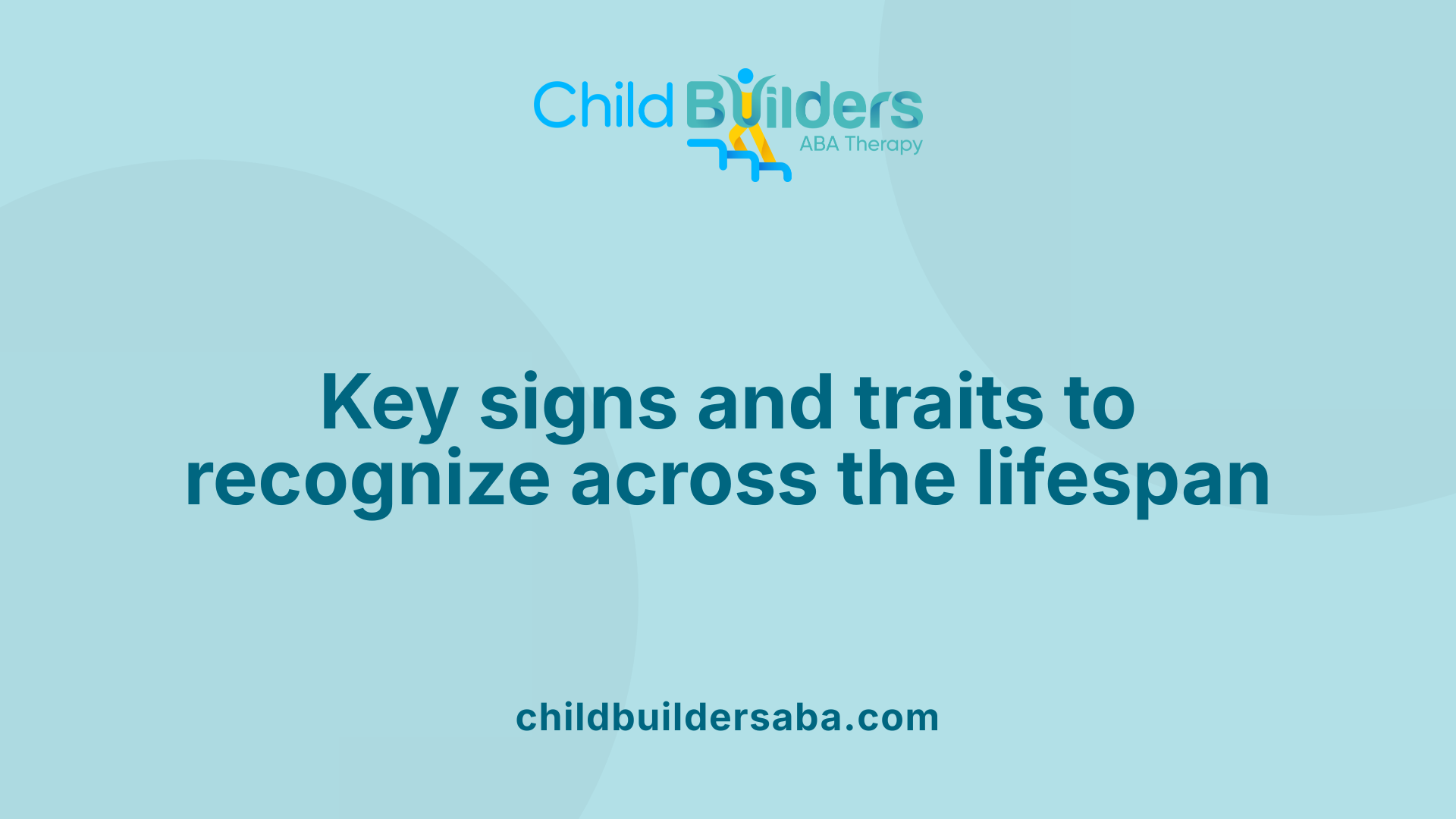
Social communication and interaction differences
Autism manifests in various ways across individuals, especially in how they communicate and relate to others. Common signs include limited or delayed speech, echolalia (repeating words or phrases), unusual speech patterns, and difficulties with eye contact. People with autism may find it hard to interpret body language or social cues, making social interactions challenging. They often have to consciously put effort into social behaviors and may feel overwhelmed in social settings.
Restricted and repetitive behaviors and interests (RRBIs)
Another hallmark of autism involves restricted interests and repetitive behaviors. Many autistic individuals prefer routines and may become very attached to specific habits or interests. Repetitive movements, such as hand-flapping or rocking, are common. They might also struggle to disengage from intense interests and can become anxious if routines are disrupted, reflecting a desire for predictability and familiarity.
Sensory differences and sensitivities
Sensory processing differences are also typical. Some individuals experience hypersensitivity, meaning they are overly sensitive to visual, auditory, smell, or touch stimuli. Others may be hyposensitive, seeking out sensory input. These differences can lead to aversions or seeking behaviors—covering ears, avoiding certain textures, or intensively exploring sensory details like patterns, sounds, or smells.
Early signs in children and adults
Early signs of autism appear in childhood, often noticed as limited eye contact, repetitive motions, delayed speech, or challenges in social engagement. As children grow, these signs may evolve but tend to remain evident.
In adults, signs can be more subtle or masked, such as difficulty understanding social rules, rigidity, intense interests, or sensory sensitivities. Many adults report feeling different from peers, having trouble making friends, or appearing blunt or uninterested without intending to. Recognition of autism in adulthood often depends on self-awareness or external observation, sometimes occurring only after a formal diagnosis.
Understanding that autism is a spectrum helps frame these signs as part of a wide range of experiences. Some individuals might have significant challenges, while others excel in certain areas, highlighting the importance of personalized support and acceptance.
Recognizing Autistic Traits Across the Lifespan
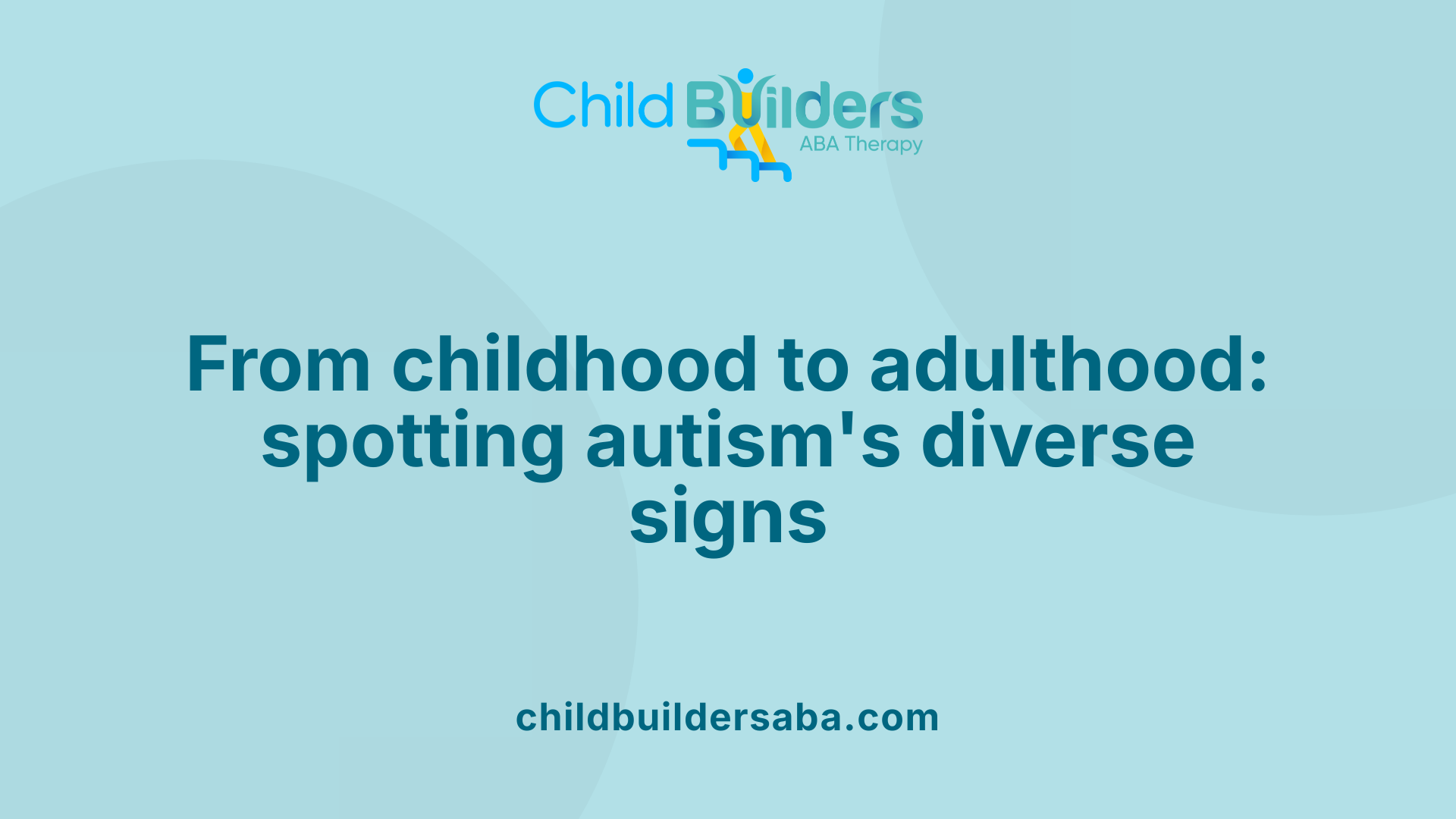
Signs in children: speech delays, body language, repetitive behaviors
Early signs of autism often appear in childhood and can include limited eye contact, delayed speech development, and unusual body language such as repetitive movements or gestures. Children might also exhibit intense interests or insist on routines, making it difficult for them to adapt to changes.
Parents and caregivers may notice these behaviors early on. For example, a child might not respond to their name, respond with echolalia (repeating words or phrases), or show a preference for specific routines and activities. Recognizable signs in social interaction can include difficulty interpreting body language or social cues, as well as challenges in maintaining eye contact.
Repetitive behaviors and restricted interests are hallmark features. These can manifest as repetitive motions like hand-flapping or rocking, or fixations on particular objects or topics. Sensory differences, such as hypersensitivity to sounds, lights, or textures, are also common in children with autism. They may seek sensory input or avoid sensory stimuli, often reacting strongly to sensory overload.
Understanding these signs helps in early identification, which can lead to supportive interventions tailored to the child’s needs.
Are autistic individuals self-aware of their autism?
Many autistic individuals become aware of their unique traits through personal reflection, experiences, and interactions within their communities. Signs like difficulty making friends, feeling uncomfortable in social situations, or struggles with communication often prompt self-awareness.
While children might not recognize their behaviors as part of autism early on, many adults report that they sensed they were different even in childhood. They might not have had a formal diagnosis until later in life but often reflect on feeling different from their peers, socially or sensory-wise.
Adults who discover their autism typically do so through self-education, reading, or interactions with other autistic individuals. For some, masking — consciously or unconsciously hiding traits to fit in — complicates their recognition. Over time, self-awareness can lead to seeking diagnosis and support.
Recognition of autism at any age is crucial as it allows individuals to access resources that enhance their quality of life. Whether in childhood or adulthood, understanding oneself is a vital part of embracing neurodiversity.
The Experience of Adults with Autism: Awareness and Diagnosis
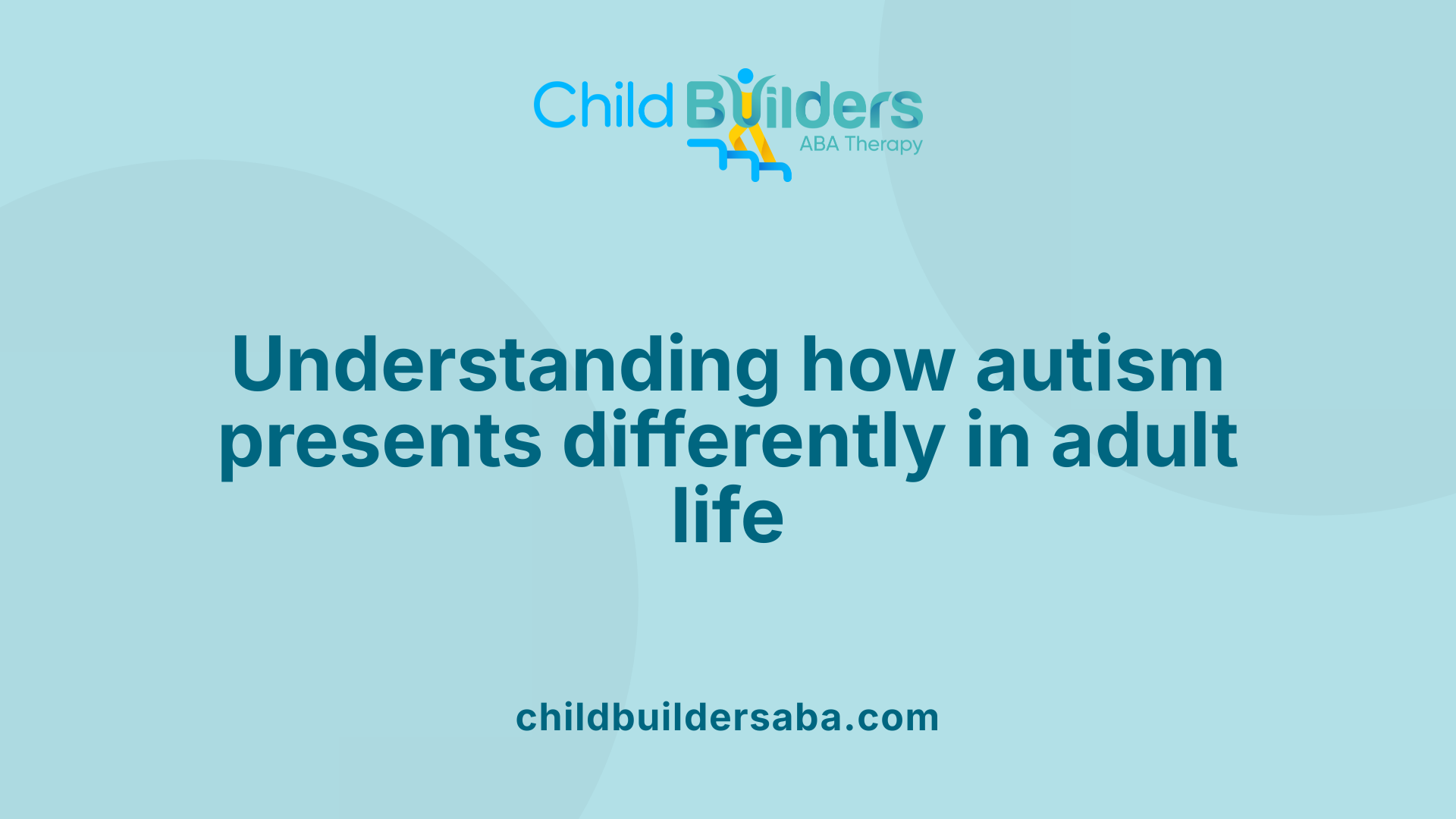
What are common signs of autism in adults?
Adults with autism often show a variety of behaviors and traits that differ from those seen in children or typical adults. Recognizable signs include difficulty understanding others’ thoughts or feelings, which can make social interactions challenging. Many adults experience anxiety in social situations, feeling overwhelmed or unsure of how to respond.
Another common sign is difficulty making friends or preferring to be alone, which might be mistaken for introversion. Some adults are perceived as blunt, rude, or uninterested without any intention, often because they struggle with reading social cues.
Expressing feelings clearly can also be difficult, leading to misunderstandings. They may interpret language literally, not catching sarcasm or jokes easily.
Strict routines are important to many, and changes can cause significant anxiety.
Avoiding eye contact and discomfort with physical contact are typical traits. Some notice small details or patterns others overlook, such as specific smells, sounds, or visual details.
Intense interests or hobbies are common, often requiring careful planning and focus.
Understanding these signs is crucial for recognizing autism in adulthood, especially since many may not have been diagnosed earlier.
The Complexity of Self-Recognition and Diagnosis in Adults
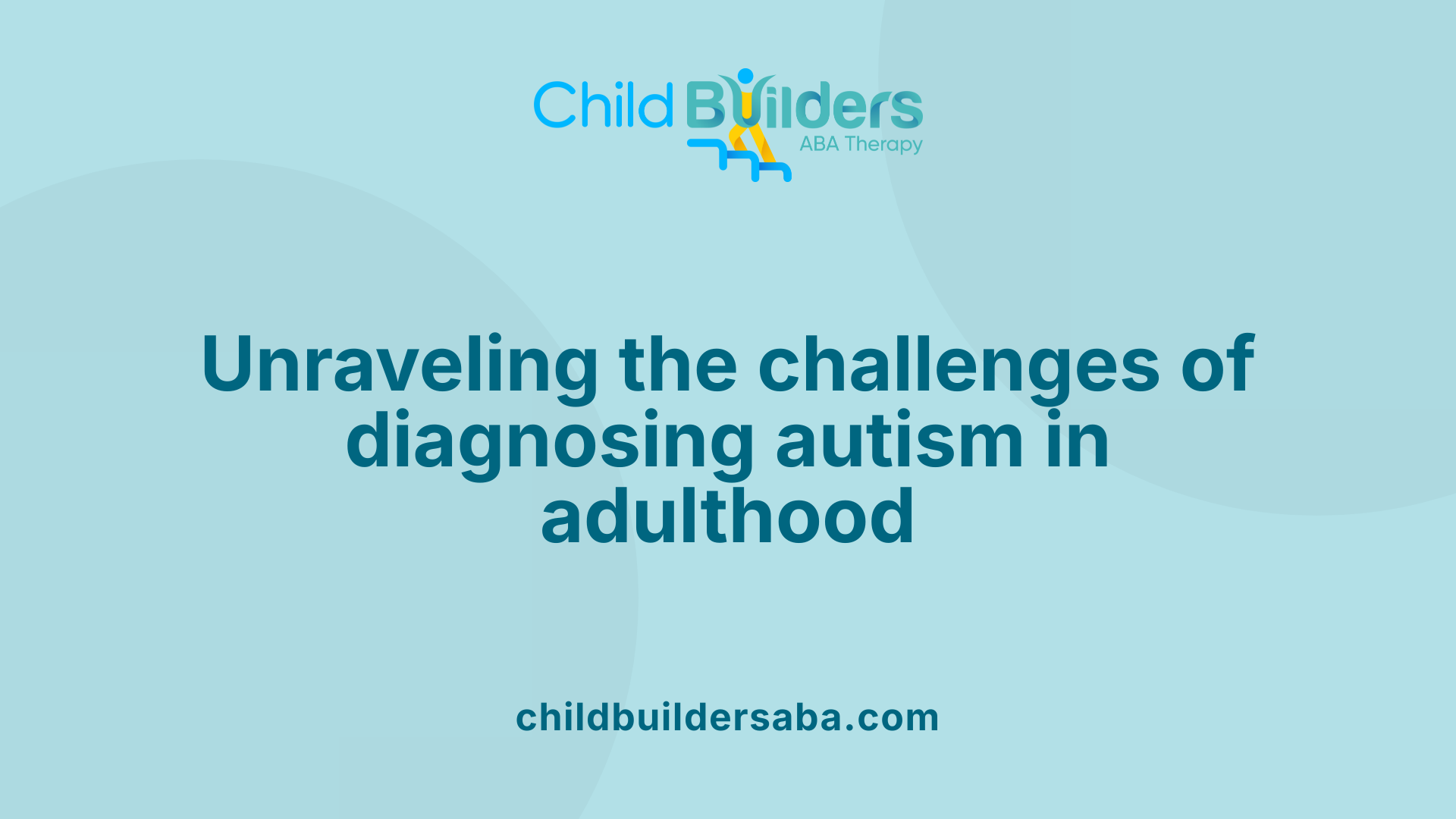
How are autism diagnoses made in adults?
Diagnosing autism in adults involves a detailed process that often includes developmental and behavioral assessments. Since there’s no specific laboratory test, clinicians rely on tools like the Autism Diagnostic Observation Schedule (ADOS) and comprehensive interviews to gather information about an individual’s developmental history and current behaviors.
The process typically begins with a thorough review of personal and medical history, followed by clinical observations. Mental health professionals may use self-report questionnaires and behavior checklists to identify signs consistent with autism spectrum disorder (ASD). In many cases, adults are referred to specialists who are experienced in adult autism diagnoses.
Because autism can be mistaken for other conditions such as ADHD or social anxiety disorder, accurate diagnosis requires careful differential assessment. The goal is to understand each individual’s unique profile and determine the support they may need.
What factors influence self-recognition of autism in adults?
Autistic adults may or may not recognize their autism autonomously. Factors affecting self-awareness include communication skills, social interaction abilities, and cognitive functioning.
Many with speech and language difficulties find it hard to articulate their experiences or understand their feelings, which can delay their self-recognition. Some learn about autism later in life through reading, support groups, or professional diagnosis.
Others might have developed coping strategies, such as masking autistic traits—focusing on social norms to blend in—which can hide signs of autism.
How do masking and societal misconceptions affect awareness?
Masking involves consciously or unconsciously hiding autistic traits to appear neurotypical. This can include mimicking social behaviors or suppressing stimming activities. While masking might help in social situations, it can also cause exhaustion and mental health challenges.
Societal misconceptions and stereotypes often contribute to misunderstandings about autism. Many individuals grow up unaware of their traits or misunderstood them, attributing behaviors to personality or character flaws.
Self-recognition often occurs gradually over time, sometimes only after community connections or educational resources clarify their experiences. This delayed understanding highlights the importance of awareness and supportive environments.
More about autism diagnosis and self-awareness in adults
| Aspect | Description | Impact |
|---|---|---|
| Diagnostic methods | Observation, interviews, checklists, no lab test | Ensures tailored understanding and support |
| Self-awareness factors | Communication skills, masking, societal info | Influences when and if adults recognize autism |
| Masking and misconceptions | Hiding traits, stereotypes create barriers to awareness | Can delay diagnosis and support |
Understanding adult autism recognition involves considering diverse experiences and the influence of societal attitudes. Encouraging awareness and acceptance is vital for adults seeking clarity about their neurodivergence.
Cognitive and Emotional Abilities of Autistic People

Do autistic people have high IQ?
Autistic individuals display a broad spectrum of intellectual abilities. Contrary to outdated stereotypes, many autistic people possess average or above-average IQs. Recent studies suggest that around 60% of those who meet inclusive diagnostic criteria have IQ scores in the average or higher range. These individuals often demonstrate exceptional talents in fields like mathematics, music, or art, and may excel in specific types of intelligence tests, such as Raven’s Matrices.
At the same time, some autistic people experience intellectual disabilities, which require different kinds of support. This diversity in cognitive profiles means autism is not linked exclusively to high or low intelligence. Instead, it encompasses a wide range of cognitive strengths and challenges.
Despite intellectual strengths, many autistic individuals face difficulties in social communication, emotional regulation, and sensory processing. Understanding this diversity is crucial to providing personalized support that fosters each person’s potential.
Do autistic people have empathy?
Empathy among autistic people is complex and varies a lot from person to person. The common misconception that autistic individuals lack empathy is not accurate.
Many autistic individuals experience emotional empathy — they can feel and respond strongly to others’ emotions, especially negative feelings. Sometimes, this heightened emotional awareness can lead to overwhelm or emotional exhaustion.
However, they might struggle with cognitive empathy, which involves understanding other people's thoughts and social cues. This can affect how they interpret non-verbal signals like body language or sarcasm.
The variability in empathy is influenced by individual factors, sensory sensitivities, and communication styles. Some autistic people display empathy more openly towards close friends or other autistic peers. Overall, empathy in autism cannot be simplified to a single trait; it exists along a spectrum of abilities and experiences.
Additional Insights
The differences in cognitive and emotional skills are part of what makes autism unique. Many autistic individuals possess strong focus, honesty, and moral understanding, often demonstrating remarkable talents and deep interests. Recognizing these strengths alongside challenges helps create an inclusive environment that supports diverse ways of thinking and feeling.
| Aspect | Traits | Notes |
|---|---|---|
| IQ | Ranges from intellectual disability to high IQ | Approximately 60% have average or above IQ |
| Empathy | Wide spectrum of emotional and cognitive empathy | Can feel intensely but may interpret social cues differently |
| Strengths | Focus, honesty, morality, deep interests | Often excel in specific skills and fields |
Understanding the range of cognitive and emotional abilities in autism fosters greater acceptance and encourages tailored support to help individuals thrive.
Understanding Moral and Emotional Capacities in Autism
Do autistic people know right from wrong?
Autistic individuals generally have a clear understanding of what is considered right and wrong. Studies show that children and many adults on the spectrum make moral judgments similar to neurotypical individuals when faced with straightforward situations. They often care deeply about justice, fairness, and adhering to rules they believe are just.
However, their moral reasoning may work differently in complex scenarios that involve understanding intentions or accidental harm. For example, they might focus more on the outcome of an action rather than the intent behind it. Many autistic people feel a strong internal sense of morality and find it upsetting if they cross a moral boundary. They often emphasize rules, safety, and fairness in their decision-making.
While their social behaviors may look different from those of other people, their core moral understanding — the sense of what is right and wrong — is typically present. They often desire to act ethically and value moral principles deeply, even if they express these differently.
Do autistic people feel love?
Yes, autistic individuals do experience love. They are capable of forming deep emotional bonds with family members, friends, and romantic partners. Their feelings of love are genuine and encompass trust, affection, and intimacy.
Expressing love might not always look like typical displays of affection. Many autistic people show their love through actions — sharing interests, supporting loved ones, or providing meaningful gestures — rather than through words or physical touch. Understanding their unique ways of expressing emotions is important for building strong relationships.
Many autistic individuals report having rich emotional lives. They feel joy, attachment, and caring emotions just like others. Recognizing and respecting their emotional expressions helps foster meaningful connections, highlighting that love is universal, regardless of how it may be expressed.
| Aspect | Typical Behaviors | Note |
|---|---|---|
| Moral Understanding | Recognize right and wrong, follow rules, care about fairness | Can differ in complex or nuanced situations |
| Expression of Love | Actions, gestures, shared interests | Verbal or physical expressions may vary |
| Emotional Depth | Feel love, trust, joy, and sorrow | Experiences are authentic and meaningful |
| Key Challenges | Communicating feelings, interpreting social cues | Support and understanding enhance relationships |
Understanding these emotional and moral aspects emphasizes that while autistic individuals might express or process these feelings differently, they are capable of moral reasoning and loving relationships. Recognizing their unique ways of experiencing the world fosters greater empathy and inclusion.
Lifelong Outlook: Autism and Life Expectancy
What is the life expectancy of a person with autism?
The lifespan of individuals with autism can vary significantly based on a range of factors, including the level of support they receive and the presence of other health conditions. Research suggests that, on average, autistic individuals tend to have a shorter lifespan compared to the general population. Estimates indicate a range between 39 and 58 years, with those requiring intensive support, such as individuals with Level 3 autism, sometimes having a life expectancy as low as 35 to 40 years.
However, recent studies show more promising data. Many autistic adults, particularly men, are living into their early 70s or mid-70s, while women are often reaching their late 70s. This overlap with typical lifespan figures highlights improvements in healthcare, early intervention, and ongoing support.
Factors influencing longevity include access to healthcare, management of co-occurring conditions like epilepsy or heart issues, and social support networks. Supportive living environments and tailored healthcare plans can play vital roles in enhancing quality of life and potentially extending lifespan.
Overall, while there are challenges, with appropriate medical care, support systems, and societal understanding, many autistic people are living longer, healthier lives. Awareness and proactive management are essential to optimize health outcomes across the lifespan.
Bridging Awareness, Recognition, and Acceptance
Understanding whether autistic individuals know they are autistic involves recognizing the diversity of experiences, behaviors, and self-awareness levels across the spectrum. Many become aware through personal reflection, societal interactions, or professional diagnosis, while others may remain unaware, especially if they have masked traits or lack information. Supporting autistic individuals with awareness, acceptance, and appropriate interventions fosters a better understanding of their own identity and helps bridge gaps between neurodiversity and societal expectations.
References
- Signs that a child or adult may be autistic
- Signs of autism in adults - NHS
- Autism Spectrum Disorder (ASD) Symptoms & Causes
- What Are the Signs of Autism in Adults? - ADDitude
- Do Autistic People Know They're Autistic? - Astra ABA
- Stimming and autism - Leicestershire Partnership NHS Trust
- Autism and Stimming | Prosper Health





.jpg)































































































